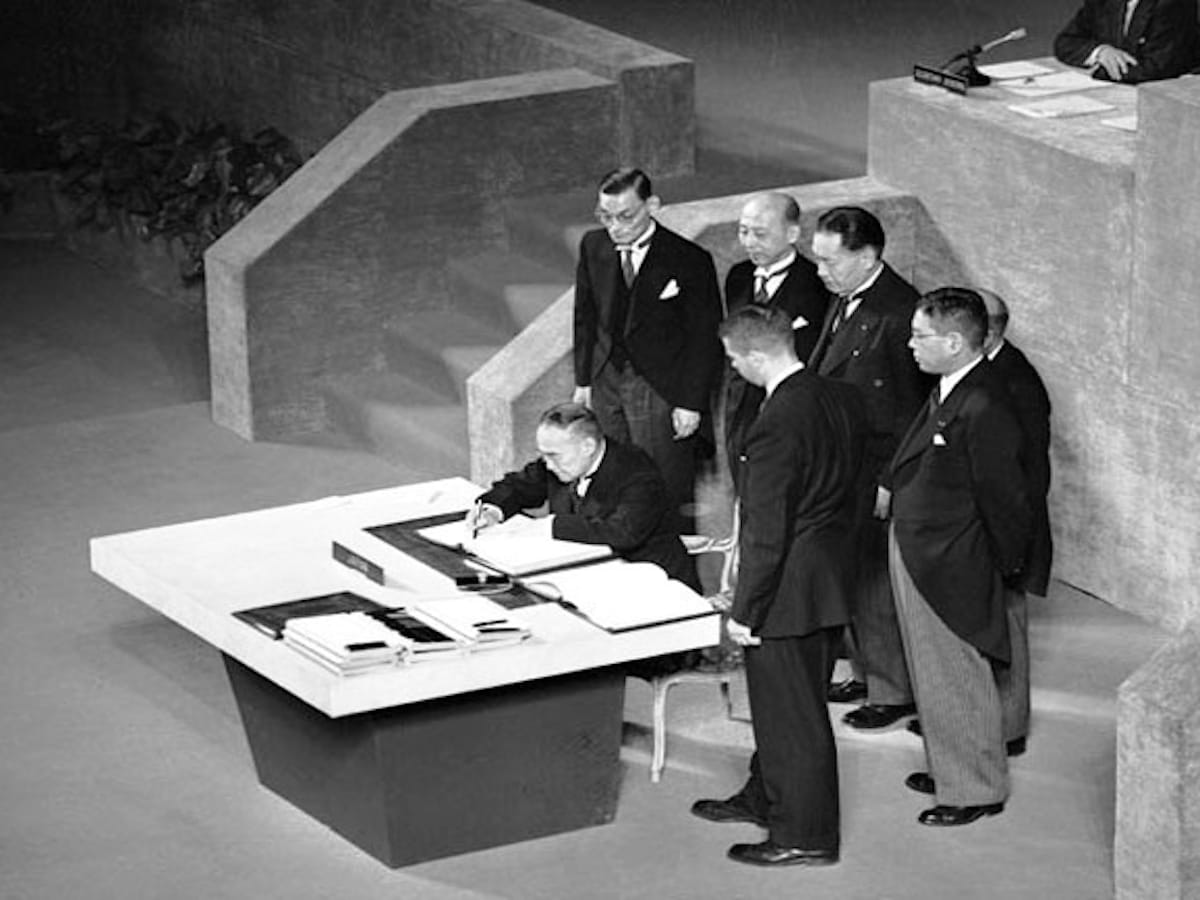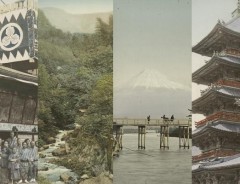
Source: Japanese Prime Minister Shigeru Yoshida signing the Treaty of San Francisco. | Public domain, via Wikimedia Commons
Treaty of San Francisco, cornerstone of U.S. Japan defence pact, turns 70 in September
- Tags:
- geopolitics / History / military / Pacific War / San Francisco Treaty / Security Treaty
Related Article
-

“Utsukushiki” Project Showcases Breathtaking History Of Japanese Beauty
-

Rare Restored Footage With Sound Of Kyoto In 1929
-

Ultimate Humane Act in Wartime: The Story of the Unknown Japanese Boy Scout Soldier
-

Early Hand-Colored Photography Of Japan Gives Us A Window Into The Past
-

30 Photos Of Japan A Century Ago That Provide A Window Into A Bygone Age
-

Free Digital Collection Of Historical Japanese Artworks Brings The Museum To You


On 8 September 8th, the world will mark the 70th anniversary of the Treaty of San Francisco that Japan signed with the United States in 1951. The treaty was hugely important, as it made allies of the wartime enemy states and arguably supplied the basis for Japan's post-war economic miracle.
The main purpose of the Treaty of San Francisco was to officially bring the state of war between the two countries to an end. By one of the treaty's terms, Japan accepted the judgment of the International Military Tribunal for the Far East, which laid the blame for the conflict squarely at Japan's door. By another, sovereignty was restored to Japan. The United States ended its occupation, which it had imposed on the defeated country at the end of World War Two in 1945.
Statue of former Japanese PM Shigeru Yoshida in Kitanomaru Park, Tokyo. | Toshihiro Gamo, CC by 2.0 / © Flickr.com
At the same time, the two countries also signed a Security Treaty, which remains in force to this day. This treaty created a military alliance between the two countries and provided for a huge U.S. military presence in Japan.
This was an important milestone not only for US-Japan relations but also for the wider Asia-Pacific region, for it established the boundaries by which American policymakers shaped the post-war order.
Known as the “San Francisco System," this refers to the “hub and spokes” network of bilateral alliances that the U.S. constructed in East Asia. The hub is the United States, while the spokes are the military bases that it maintains in Japan (where it has 55,000 military personnel), South Korea (24,000), Taiwan (30,000), the Philippines, and Australia.
U.S. Army Master Sgt. Elizandro Jimenez taking the Inspector General oath at USARJ headquarters at Camp Zama in Kanagawa prefecture in July 2016. | USARJ NCO CORPS, CC by 2.0 / © Flickr.com
The San Francisco System is central to the security architecture of the Asia-Pacific and is credited with underpinning the peace and prosperity of the region today. There is, however, also a recognition that the treaty on which it is based effectively froze many international disputes that could and should have been resolved in 1945.
Among these disputes is the division of the Korean peninsula into North and South and the informal independence of the Republic of China (Taiwan). These remain some of the most intractable territorial disputes and geopolitical flashpoints in the Asia-Pacific region.
That's because the Treaty of San Francisco was based on exclusion just as much as it was incorporation. While some Asian countries such as Cambodia, Laos, Vietnam, Indonesia, and the Philippines were invited to the signing ceremony, the Soviet Union was not invited, and neither were the Chinese, Koreans, or Indians. Indeed, the Soviets opposed the treaty, which it regarded as a way of establishing Japan as a U.S. military base. It was concerned that the treaty had the potential to draw Japan into a military coalition against the USSR - concerns that the Chinese government shared.
Given the lack of consensus at the heart of the San Francisco Treaty, it is hardly surprising that while much of the Asia-Pacific region has thrived and prospered since 1951, the security architecture the treaty enshrines has suffered some seismic shocks. The collapse of the USSR, the end of the Cold War, the rise of China, and the financial crises of 2007-8 have all affected the region's security arrangements.
The United States has also changed. Donald Trump might be out of office, but Joe Biden has yet to dispute his insistence that allies pay more towards the maintenance of the existing security apparatus. The San Francisco System is still in place, but the assumptions people hold about security in the Asia-Pacific region - how problems are framed, and possible solutions conceived - are less fixed today than they have been at any time since 1945.